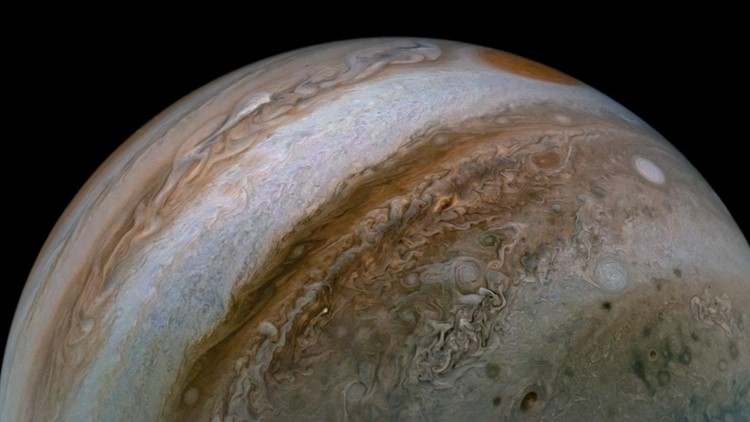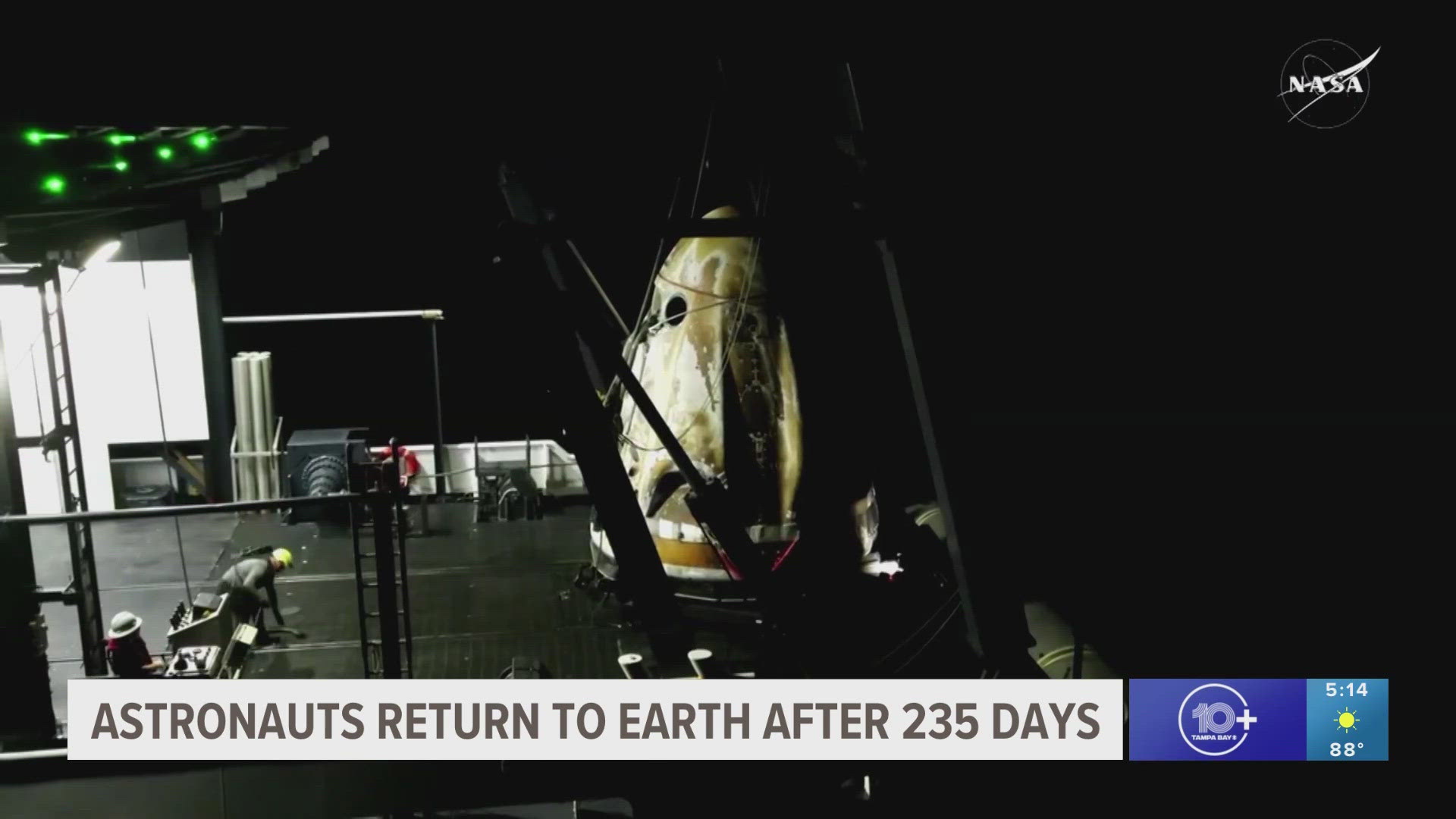CALIFORNIA, USA — Back on Earth scientists now have a "fuller picture" of Jupiter's colorful atmospheric features, thanks to the hard work of the Juno probe.
The spacecraft entered Jupiter's orbit in 2016 and has made 37 passes of the planet to peer below its cloud deck.
Now, new findings are offering clues about "unseen processes" occurring on Jupiter like the inner workings of its belts and zones, in addition to its polar cyclones.
“These new observations from Juno open up a treasure chest of new information about Jupiter’s enigmatic observable features,” said Lori Glaze, director of NASA’s Planetary Science Division.
Among Juno's revelations was giving scientists a 3D look into the planet's "beautiful and violent" atmosphere, according to experts.
NASA says Juno's microwave radiometer (MWR) allows its mission scientists to probe the structure of Jupiter's vortex storms, including the "iconic" anticyclone known as the Great Red Spot.
"Wider than Earth, this crimson vortex has intrigued scientists since its discovery almost two centuries ago," NASA wrote.
Juno's new results also showed scientists that cyclones are taller than expected and warmer on top, where it has a lower atmospheric density and are colder on the bottom, where the atmospheric density is higher.



